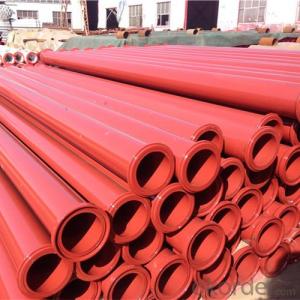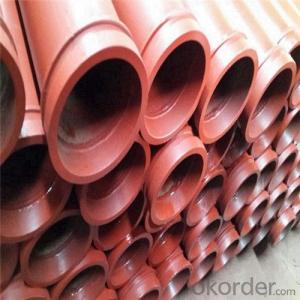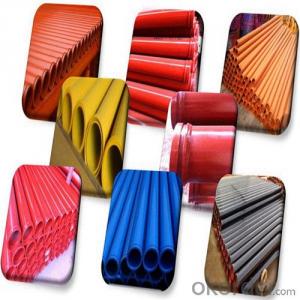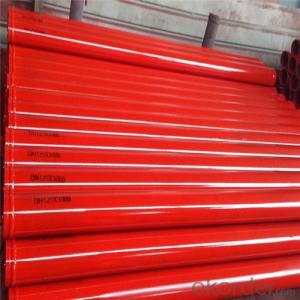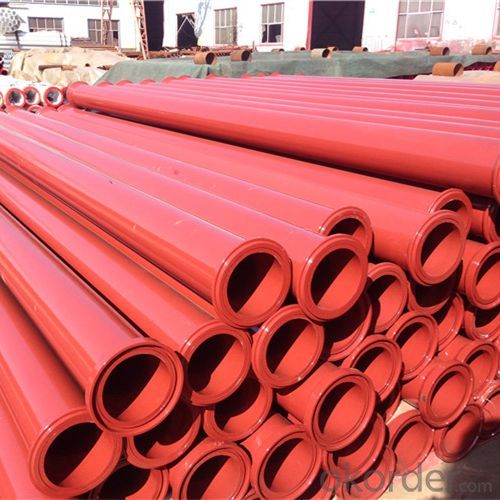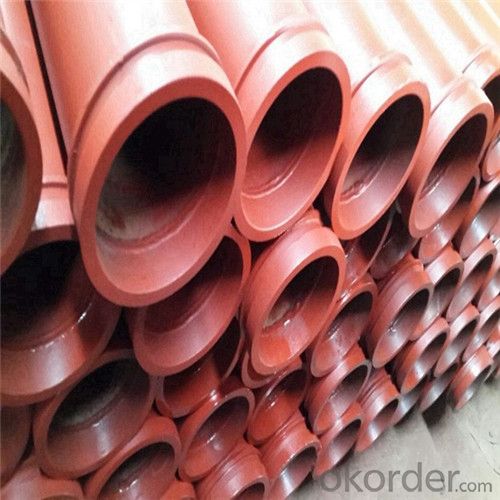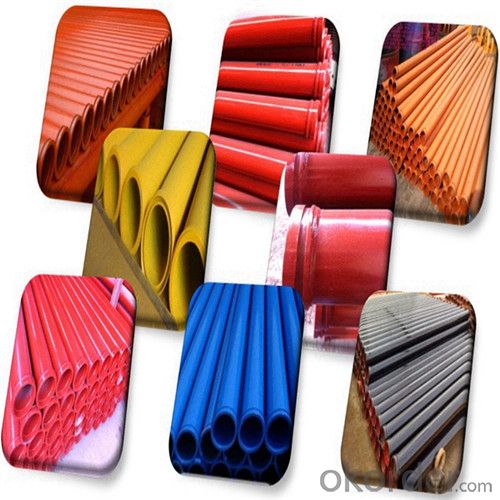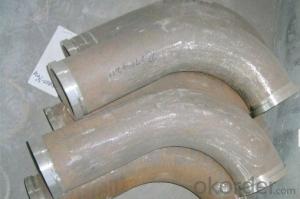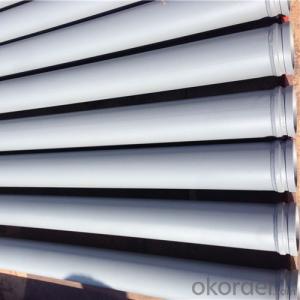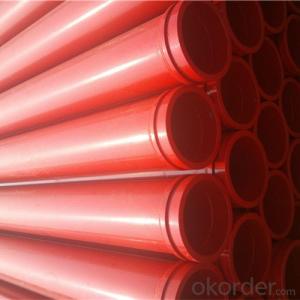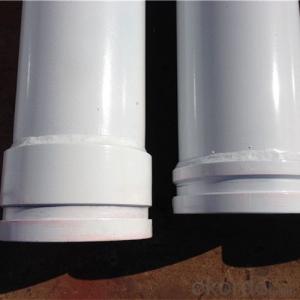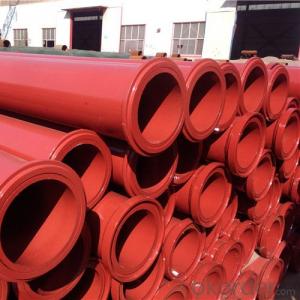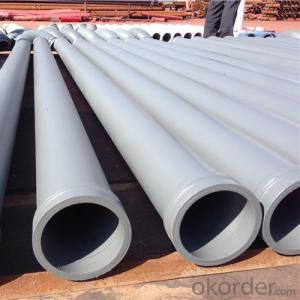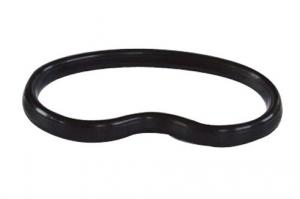3M Seamless Delivery Pipe for Concrete Pump Thickness 5.2mm
- Loading Port:
- Tianjin
- Payment Terms:
- TT or LC
- Min Order Qty:
- 50 pc
- Supply Capability:
- 5000 pc/month
OKorder Service Pledge
OKorder Financial Service
You Might Also Like
3M Seamless Delivery Pipe for Concrete Pump Thickness 5.2mm
1. Structure of 3M Seamless Delivery Pipe for Concrete Pump Thickness 5.2mm
St52 Seamless Pipe: Now More People like use this kind for Truck Pump and Trailer Pump because of the quality is better and it is seamless kind, so this kind pipe is most popular in Middle East Price About 34USD-37USD.
2. Main Features of 3M Seamless Delivery Pipe for Concrete Pump Thickness 5.2mm:
• In case of quality problem the company provide free replacement.
• Provide technical support for free.
• Our company passed the ISO9000 certification, the product through 3C certification in full compliance with national standards
3. 3M Seamless Delivery Pipe for Concrete Pump Thickness 5.5mm Images
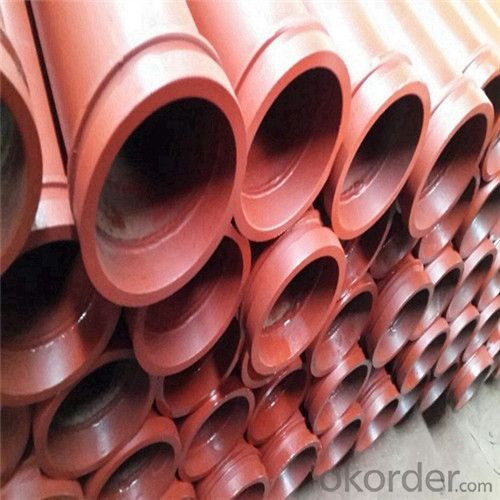

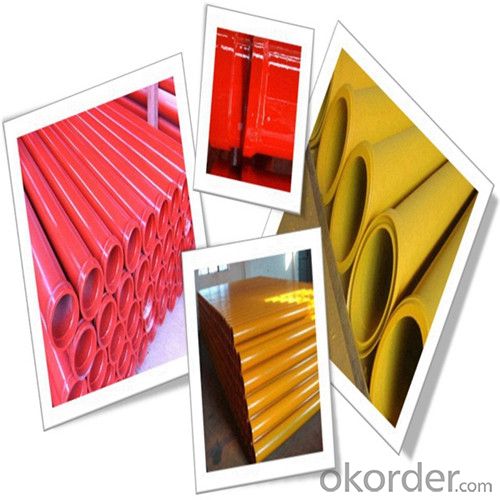
4. 3M Seamless Delivery Pipe for Concrete Pump Thickness 5.2mm Specification
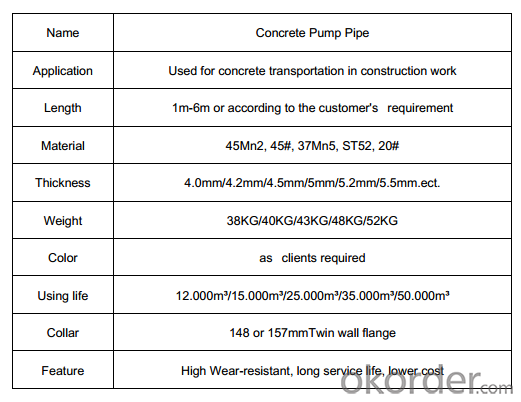
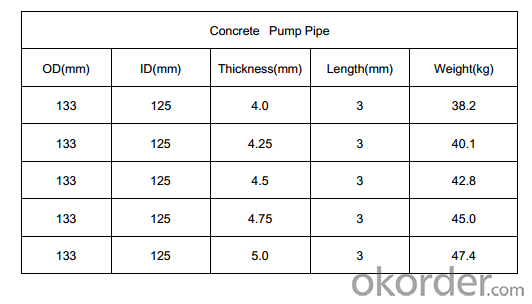
Production Process
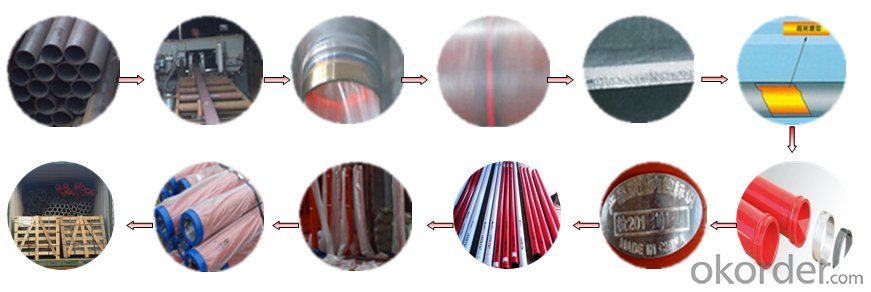
5. FAQ
We have organized several common questions for our clients, may help you sincerely:
①How to guarantee the quality of the products?
We have established the international advanced quality management system,every link from raw material to final product we have strict quality test;We resolutely put an end to unqualified products flowing into the market. At the same time, we will provide necessary follow-up service assurance.
②How long can we receive the product after purchase?
In the purchase of product within three working days, we will arrange the factory delivery as soon as possible. The specific time of receiving is related to the state and position of customers. Commonly 15 working days can be served.
- Q: What are the specifications for concrete delivery pumps?
- In the hot season construction, concrete pump to prevent the oil temperature is too high. When the temperature reaches 70 degrees, stop running or take other measures to cool down;
- Q: Are there any specific guidelines for the disposal of packaging materials of concrete pump spare parts?
- Yes, there are specific guidelines for the disposal of packaging materials of concrete pump spare parts. It is recommended to follow local regulations and environmental guidelines to ensure proper disposal. This may include recycling or reusing packaging materials whenever possible and disposing of them in designated waste management facilities.
- Q: Can I get spare parts for concrete pumps with different types of valve systems, such as S-valve or gate valve?
- Yes, it is possible to get spare parts for concrete pumps with different types of valve systems, such as S-valve or gate valve. Concrete pump manufacturers and suppliers usually offer a wide range of spare parts for their equipment, including valves. These spare parts can be ordered directly from the manufacturer or through authorized distributors. It is important to provide specific information about the concrete pump model, valve type, and any other relevant details when ordering spare parts to ensure compatibility. Additionally, there are specialized companies that focus on supplying spare parts for concrete pumps, regardless of the valve system type. These companies often have a comprehensive inventory of spare parts and can assist in identifying and sourcing the required parts for your specific concrete pump.
- Q: How can one determine the correct voltage and current rating for electrical components in concrete pump spare parts?
- To determine the correct voltage and current rating for electrical components in concrete pump spare parts, several factors need to be considered. Firstly, it is essential to consult the manufacturer's specifications and documentation for the concrete pump and its spare parts. These documents usually provide detailed information about the voltage and current requirements for each electrical component. Paying close attention to these guidelines ensures that the components are operated within their designed parameters. Secondly, it is crucial to understand the electrical system and its requirements. This involves analyzing the power supply available at the site where the concrete pump will be used. Factors such as the voltage level (e.g., 110V, 220V, 440V) and frequency (e.g., 50Hz, 60Hz) of the electrical supply need to be taken into account. Additionally, the maximum current capacity of the electrical system must be considered to prevent overload situations. Furthermore, it is advisable to assess the specific application and operating conditions of the concrete pump. Different components may have varying voltage and current requirements depending on their function and the environment in which they are used. For instance, components installed in outdoor areas may require higher voltage ratings to withstand harsh weather conditions. Lastly, seeking professional assistance from qualified electricians or engineers is highly recommended. They possess the expertise and knowledge to accurately determine the voltage and current ratings for electrical components in concrete pump spare parts. Their experience allows them to consider various factors such as safety regulations, compatibility with the existing electrical system, and any specific requirements of the concrete pump manufacturer. By taking into account the manufacturer's specifications, understanding the electrical system, considering the application and operating conditions, and seeking professional advice, one can effectively determine the correct voltage and current rating for electrical components in concrete pump spare parts.
- Q: What is the purpose of a concrete pump hydraulic oil cooler?
- The purpose of a concrete pump hydraulic oil cooler is to regulate and maintain the temperature of the hydraulic oil used in the pump system. By cooling the oil, it helps prevent overheating and ensures optimal performance and longevity of the hydraulic components.
- Q: Are there any specific quality control measures for the production of concrete pump spare parts?
- Concrete pump spare parts are subject to specific quality control measures to guarantee that they meet the necessary specifications and are of excellent quality. Standardized production processes are one of the primary quality control measures employed. Manufacturers adhere to particular procedures and guidelines during the production of spare parts, ensuring consistency and accuracy. This involves using high-quality materials, precise measurements, and advanced manufacturing techniques. To further ensure quality, rigorous testing and inspection take place throughout the production process. Dimensional checks, hardness tests, and material composition analysis, among others, are conducted to identify any defects or deviations from the required standards. Prompt corrective actions can then be taken. To continuously improve production processes, manufacturers may implement quality management systems like ISO 9001. These systems establish quality objectives, monitor performance, and implement corrective actions when needed. Furthermore, manufacturers may seek third-party quality assessment and certification. Independent organizations conduct audits and inspections to ensure that the spare parts meet the required quality standards. Certifications from these programs provide customers with assurance regarding the quality and reliability of the spare parts. In conclusion, the production of concrete pump spare parts undergoes strict quality control measures to meet necessary specifications and ensure high quality. These measures contribute to the performance, durability, and reliability of the spare parts in concrete pump applications.
- Q: How long do concrete pump hoses typically last?
- Concrete pump hoses typically last between 5 to 10 years, depending on various factors such as usage, maintenance, and the quality of the hose itself. Regular wear and tear, exposure to harsh chemicals, and extreme weather conditions can all contribute to the deterioration of the hose over time. Proper maintenance, including regular cleaning, inspection, and replacement of worn-out parts, can help extend the lifespan of the hose. However, it is important to note that regular monitoring and replacement of hoses are necessary to ensure the safety and efficiency of the concrete pumping process.
- Q: Are there any specific safety considerations when using concrete pump spare parts?
- Yes, there are specific safety considerations when using concrete pump spare parts. It is essential to ensure that the spare parts are compatible with the concrete pump and installed correctly to prevent any potential hazards. Regular inspections and maintenance of the spare parts are also crucial to ensure their safe and efficient operation. Additionally, following proper safety protocols, such as wearing appropriate personal protective equipment and adhering to manufacturer guidelines, is necessary to minimize the risk of accidents and injuries.
- Q: What are the signs of a worn-out concrete pump piston?
- There are multiple indicators that can suggest a worn-out concrete pump piston. Initially, a decrease in output or performance may signify this issue. Reduced pumping pressure or slower pumping speed can be observed as a result of this decline in performance. Another indication of a worn-out piston in a concrete pump is increased leakage. If you notice an excessive amount of hydraulic oil or water leaking from the pump, it could be an indication that the piston is no longer effectively sealing. This leakage can also lead to contamination of the hydraulic fluid, which can cause additional harm to the pump components. Furthermore, an irregular concrete flow can be caused by a worn-out piston. If you notice inconsistent and uneven delivery of concrete, such as pulsating or surging flow, it may be due to an uneven wear pattern on the piston. This can have a detrimental effect on the quality of the concrete and the overall efficiency of the pumping operation. Additionally, excessive vibration and noise during the pumping process can also suggest a worn-out piston. Vibrations may occur as a result of the piston not moving smoothly within the cylinder, leading to friction and noise. These vibrations and noises can also indicate other underlying problems with the pump, so it is important to address them promptly. Finally, a visual inspection can provide valuable information regarding the condition of the concrete pump piston. Physical damage, such as cracks or excessive wear on the piston surface, are clear indications of a worn-out piston. These damages can be caused by abrasive materials or harsh operating conditions. In conclusion, if you observe any of these signs or suspect that your concrete pump piston is worn-out, it is crucial to have it inspected and replaced by a professional. Timely maintenance and replacement of worn-out pistons can prevent further damage to the pump and ensure a smooth and efficient operation.
- Q: Can concrete pump spare parts be coated with corrosion inhibitors for long-term storage?
- Concrete pump spare parts have the capability to be coated with corrosion inhibitors in order to ensure long-term storage. Corrosion inhibitors, which are chemicals, can be applied onto metal surfaces to either prevent or minimize the corrosion process. By administering a coating of corrosion inhibitor onto concrete pump spare parts, a protective layer can be formed, preventing any contact between moisture, oxygen, and the metal. Consequently, the chances of corrosion are significantly reduced. This becomes particularly crucial when considering long-term storage, as the spare parts might encounter harsh environmental conditions or be stored in damp areas. Ultimately, the corrosion inhibitor coating serves to extend the lifespan of the spare parts and guarantee their preservation until they are required for use.
Send your message to us
3M Seamless Delivery Pipe for Concrete Pump Thickness 5.2mm
- Loading Port:
- Tianjin
- Payment Terms:
- TT or LC
- Min Order Qty:
- 50 pc
- Supply Capability:
- 5000 pc/month
OKorder Service Pledge
OKorder Financial Service
Similar products
Hot products
Hot Searches
Related keywords
